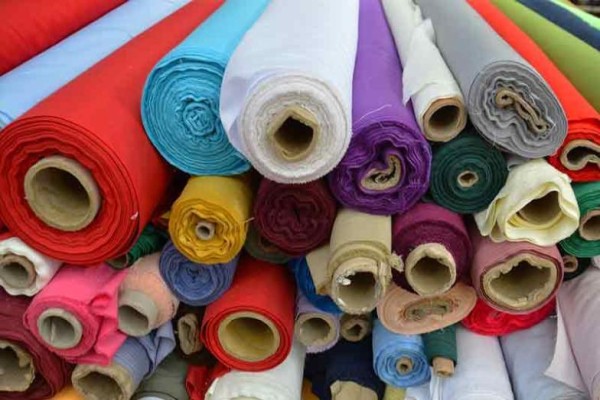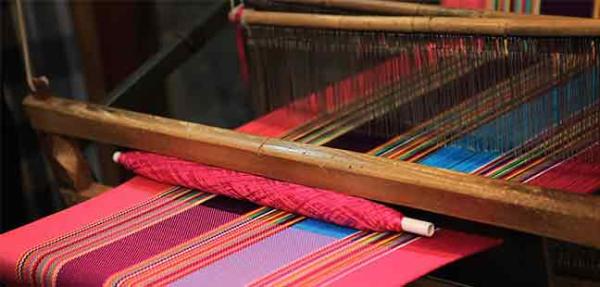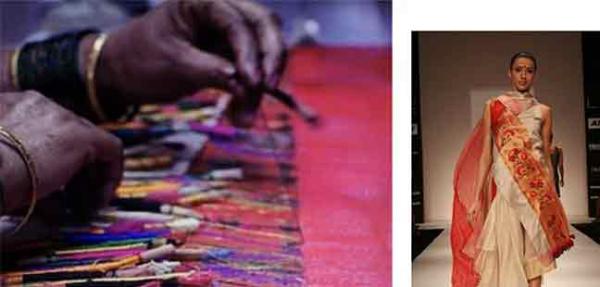
Table of Contents:
The Textile Industry of India is vibrant, energetic, and full of opportunities for growth, scope, employment, and innovation. The fashion and apparel industries provide the best examples of entrepreneurship; some are changing manufacturing processes to make products more environmentally friendly, some are meeting the younger generation's demands for fashion, and others are delivering these goods to customers on schedule and at a reasonable price.
Starting a textile business is like setting sail on an adventure, loaded with both joy and obstacles.
In this blog, we’ll decode for you how to be an entrepreneur in the Textile Industry, beginner’s steps, interesting facts, the pros and cons of the entrepreneur journey, and how to create a mark for yourself. Keep reading!
Fact: India is the 5th largest producer of technical textiles worldwide with a market size of nearly $22 Bn, expected to build up to $300 Bn when we turn 100 by 2047. (Source: https://www.investindia.gov.in/sector/textiles-apparel)
Become future-ready with our Fashion Programs
Know MoreBecome an Entrepreneur in the Textile Industry
Producing, and distributing textiles composed of synthetic materials like polyester, nylon, and acrylic or natural materials like cotton, wool, silk, and linen are the activities of a textile firm. Businesses that deal with textiles may engage in knitting, fabric weaving, dying, printing, and finishing. These companies might be large-scale endeavours with international supply networks or small-scale operations concentrating on regional markets.
Does the thought ‘How can I be successful in textile businesses’ often occur? When drafting a business plan for the textile industry, keep the following aspects in mind:
1. Acquiring Capital and Funds
Establishing a textile company costs a substantial sum of money. A variety of costs need to be considered, ranging from equipment purchases and inventory security to leasing or buying real estate. Investigating finance choices like loans, investors, or personal savings is essential to make sure there are sufficient funds on hand to launch the business.
2. Acquiring a Legal License and a Unique Brand Name
What is in a name? Everything! A strong company name is essential to identifying and branding. Coming up with catchy and imaginative titles for your textile company establishes the tone for your brand. After selecting a name, you must get the necessary licenses and registrations to make your business legally recognized.
Here’s a list of the necessary licenses and regulatory approvals for a textile business:
GSTIN (Goods and Services Tax Identification Number)
- PAN (Permanent Account Number)
- Trade License
- Shop Establishment License
- Trademark Registration (if applicable)
- Pollution & Factory License (for manufacturers)
- Any other local or industry-specific regulatory approvals are required in your jurisdiction.
3. Optimizing a Business Plan
A well-written business plan lays out your objectives, tactics, and projected financials, acting as a road map for success. Evaluating expenses, pricing policies, and income sources is necessary to determine profit margins. Through careful budgetary planning and goal-setting, you may guide your textile company toward sustainability and success.
4. Choosing a Befitting Location for Business
Choosing a prominent storefront in a busy neighbourhood guarantees visibility and foot traffic for retail enterprises. In the meanwhile, sufficient space is needed for storage and production areas in manufacturing processes. Selecting the ideal site maximizes operating efficiency while also facilitating consumer accessibility.
- High street stores provide the most foot traffic and visibility.
- Malls offer access to a wide range of potential customers.
- Both industry professionals and fashion fans are drawn to fashion districts.
- Manufacturing facilities might find enough of space in industrial zones.
- Global reach and operational flexibility are made possible by online platforms.
5. Research & Analysis of Current Market Trends
Understanding the demands and trends of the market is essential before entering the textile industry. Finding out which textiles and materials are in high demand might give you important information about where to concentrate your efforts. Through competitive and customer analysis, you may successfully customize your offers to satisfy market demands.
6. Get on Board with Suppliers
Developing trustworthy supplier relationships is essential for locating inventory and raw resources. Access to high-quality supplies at reasonable costs is ensured by doing your homework and getting in touch with reliable vendors. Developing solid relationships with suppliers promotes dependability and trust, both of which are necessary for keeping operations running smoothly and satisfying consumer needs.
7. Advertising & Marketing of Brand
Are you anxious about ‘How can I be successful in textile business?’ The key lies in efficient marketing and advertising strategies. Utilizing multiple marketing channels such as social media, digital advertising, and traditional marketing tactics helps enhance brand visibility and reach your target demographic. Buzz and sales can be generated by putting innovative marketing initiatives into action and providing discounts or promotions.
- Social media marketing
- Internet-based advertising (like Google Ads)
- Campaigns for email marketing
- Influencer partnerships
- Content marketing (such as blogging and video content)
- Print marketing collateral such as pamphlets and magazine ads
- Outdoor advertising (such as billboards and banners)
- Promotions and events
- Referral programs and loyalty initiatives
8. Relevant Degree and Experience
Government efforts such as 'Make in India', together with rising demand from both the textile and fashion sectors, make Textile Design a truly rewarding career path. A bachelor's degree in textile design opens the door to numerous professional and entrepreneurial prospects in the industry.
Textile Design Courses in India
With the right steps in the right direction, you too can be a significant part of the 2nd largest Employment generating sector of our country.
Which degree is best for the Textile Industry?
Pursue B.Des. in Textile Design degree will assist students gain a comprehensive understanding of textiles, their importance in the fashion and leisure sectors, and their rising demands in other industries such as interiors and automotive. If you're intrigued by the technical aspects of textiles, you can explore how to become a Textile Technologist.
Students will also learn about the technical and creative sides of various textiles, which will help them solve problems and think independently. A Bachelor's degree will also enable students to investigate the convergence of the digital and physical worlds, with a particular emphasis on smart textiles and the role of technology in them.

Student Guidance Center: Our Counselors are Just a Click Away.
Conclusion:
In conclusion, becoming a successful entrepreneur in the textile industry requires a blend of innovative ideas in textile business, creativity, strategic thinking, and a deep understanding of the market. With the right vision, passion, and commitment to innovation, you can transform your ideas into a thriving business. By staying adaptable, building strong relationships, and leveraging emerging trends, you'll not only navigate the challenges but also unlock incredible growth opportunities. The textile industry is full of potential—now is the time to seize it and turn your passion into profits!
Pearl Academy Editorial Team
Tags
- #Fashion
Pearl Admission Enquiry
Trending Post
-
![https://pearlproductioncdn-angdc5fwcje2hzgs.z01.azurefd.net/drupal-files/2025-04/Fashion-Designing-Courses-After-12th_130x125.webp https://pearlproductioncdn-angdc5fwcje2hzgs.z01.azurefd.net/drupal-files/2025-04/Fashion-Designing-Courses-After-12th_130x125.webp]()
-
![https://pearlproductioncdn-angdc5fwcje2hzgs.z01.azurefd.net/drupal-files/2025-05/Short-Term-Fashion-Designing-Courses_130x125.webp https://pearlproductioncdn-angdc5fwcje2hzgs.z01.azurefd.net/drupal-files/2025-05/Short-Term-Fashion-Designing-Courses_130x125.webp]()
Kickstart Your Career with Short-Term Fashion Designing Courses
2025-05-14By Pearl Academy Editorial Team
-
![https://pearlproductioncdn-angdc5fwcje2hzgs.z01.azurefd.net/drupal-files/2025-05/How-to-Get-Started-in-a-Fashion-Design-Career_130x125.webp https://pearlproductioncdn-angdc5fwcje2hzgs.z01.azurefd.net/drupal-files/2025-05/How-to-Get-Started-in-a-Fashion-Design-Career_130x125.webp]()
Related Articles
Subscribe to Pearl Blogs
By clicking the "Subscribe" button, I agree and accept the privacy policy of Pearl Academy.













































































